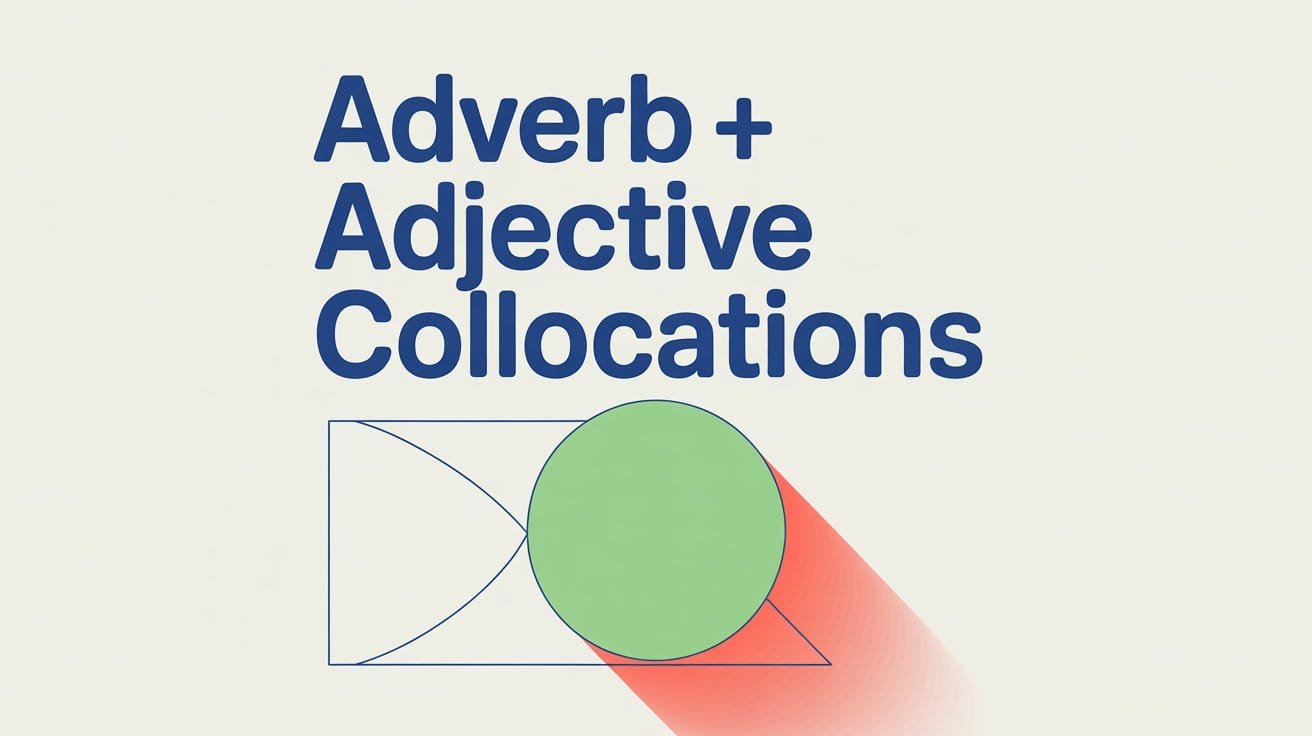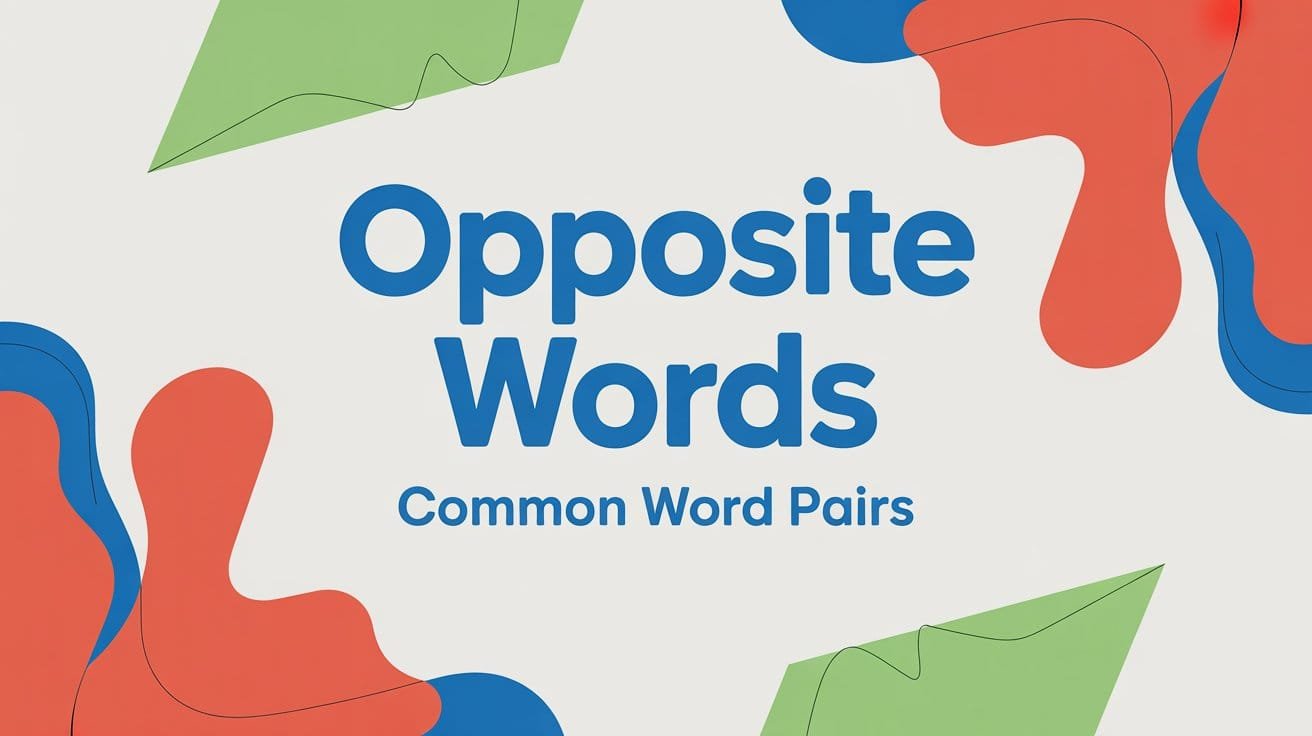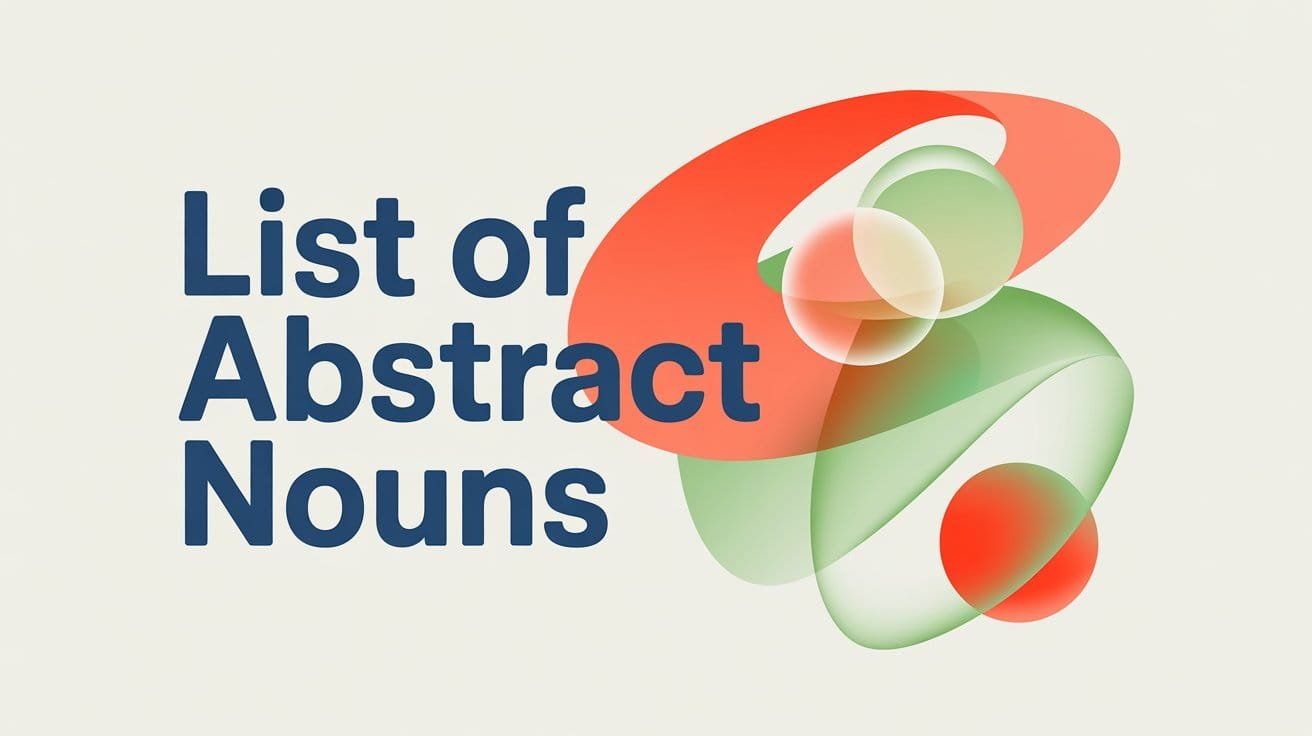Some words in English just seem to belong together. We say deeply sorry, not strongly sorry, and absolutely beautiful, not completely beautiful. These natural pairings of an adverb and an adjective are called adverb + adjective collocations.
They appear constantly in spoken and written English, helping you sound natural, fluent, and precise. The adverb adds emphasis or emotion to the adjective, giving your sentence a clear tone or intensity.
In this guide, you’ll explore common adverb adjective collocations used in everyday and formal English, understand why some combinations work better than others, and learn practical ways to use them correctly.
Understanding Adverb + Adjective Collocations
An adverb + adjective collocation is a natural combination where a specific adverb regularly appears with a particular adjective. These pairings sound right to native speakers because they’ve been used repeatedly and feel familiar in real communication.
For example, English speakers say utterly ridiculous, highly unlikely, and deeply grateful. These sound natural, while perfectly ridiculous or strongly grateful feel awkward — even though they’re grammatically correct.
Not every adverb can pair naturally with every adjective. A collocation forms only when the two words occur together often enough that native speakers expect them. For instance:
- completely different ✅ sounds natural.
- entirely different ✅ also works.
- totally different ✅ is casual but common.
- perfectly different ❌ sounds unnatural.
That’s why learning collocations is about noticing patterns, not memorizing random word pairs. The more you read and listen to English, the more you’ll recognize which adverbs naturally “fit” certain adjectives.
Patterns and Categories of Adverb + Adjective Collocations
Adverb + adjective collocations often follow clear patterns based on how the adverb modifies meaning. Recognizing these patterns helps you choose combinations that sound natural and accurate.
Adverbs of Totality: absolutely, completely, totally, entirely
These adverbs express full intensity or completeness. They often appear with adjectives that describe extreme states.
Examples:
- absolutely certain
- completely wrong
- totally different
- entirely satisfied
- absolutely perfect
Example sentence: The test results were completely accurate, leaving no doubt.
Adverbs of Degree: highly, deeply, strongly, greatly
These are used to intensify adjectives, especially in formal or descriptive contexts.
Examples:
- highly successful
- deeply concerned
- strongly opposed
- greatly improved
- highly skilled
Example sentence: The company was highly successful in expanding to new markets.
Adverbs Showing Emotion: deeply, bitterly, terribly, painfully
These adverbs describe strong emotional reactions or personal feelings.
Examples:
- deeply grateful
- bitterly disappointed
- terribly sorry
- painfully shy
- deeply moved
Example sentence: She was deeply moved by the kind gesture.
Adverbs of Frequency or Probability: highly, very, extremely, quite
Used to show likelihood or degree of possibility.
Examples:
- highly likely
- very unusual
- extremely rare
- quite possible
- fairly common
Example sentence: It’s quite possible that we’ll finish ahead of schedule.
Adverbs of Limitation: barely, hardly, scarcely, rarely
These adverbs describe minimal degree or near absence.
Examples:
- barely visible
- hardly noticeable
- scarcely believable
- rarely available
- seldom accurate
Example sentence: The writing was barely visible under the dim light.
Adverbs with Fixed Adjective Pairings
Some adjectives naturally pair with one specific adverb. These are strong collocations you’ll often hear.
Examples:
- fast asleep
- well aware
- deeply rooted
- fully equipped
- highly unlikely
Example sentence: I’m well aware of the effort it takes to learn English collocations.
Common Adverb + Adjective Collocations (with Examples)
- absolutely certain — I’m absolutely certain this is the right answer.
- completely wrong — Your assumption was completely wrong.
- totally different — The two designs are totally different in style.
- entirely possible — It’s entirely possible that she’ll arrive early.
- perfectly clear — The instructions were perfectly clear.
- deeply involved — She’s deeply involved in community work.
- highly effective — This method is highly effective for memorization.
- strongly recommended — This course is strongly recommended for beginners.
- fully aware — I’m fully aware of the consequences.
- greatly appreciated — Your help is greatly appreciated.
- deeply sorry — He was deeply sorry for the mistake.
- bitterly disappointed — She felt bitterly disappointed after the loss.
- terribly sad — It’s terribly sad to hear the news.
- highly amused — The audience was highly amused by the comedian.
- genuinely surprised — I was genuinely surprised by their reaction.
- deeply grateful — We’re deeply grateful for your support.
- painfully aware — He’s painfully aware of his limitations.
- utterly exhausted — After the long trip, they were utterly exhausted.
- extremely nervous — She felt extremely nervous before the speech.
- absolutely delighted — They were absolutely delighted with the results.
- highly successful — The campaign was highly successful this year.
- remarkably talented — He’s a remarkably talented musician.
- incredibly difficult — This puzzle is incredibly difficult to solve.
- exceptionally good — The service here is exceptionally good.
- unusually quiet — The streets were unusually quiet tonight.
- fairly common — It’s fairly common to make small mistakes at first.
- slightly better — The new version is slightly better than the old one.
- particularly useful — This app is particularly useful for students.
- highly unlikely — It’s highly unlikely to rain today.
- totally unnecessary — That comment was totally unnecessary.
- hardly noticeable — The difference was hardly noticeable.
- barely visible — The writing was barely visible on the board.
- scarcely believable — Her story was scarcely believable.
- rarely available — That edition is rarely available in stores.
- seldom accurate — Online rumors are seldom accurate.
Mixed or Complex Adverb Collocations
Not all adverb collocations are just two words. In real English, adverbs often combine with adjectives, prepositions, or entire phrases to form extended expressions that sound natural and fluent.
Adverb + Adjective + Preposition Combinations
In many collocations, the adjective connects to a preposition that completes the meaning.
Examples:
- deeply involved in — She’s deeply involved in volunteer work.
- highly aware of — They’re highly aware of current trends.
- strongly opposed to — The group is strongly opposed to the new law.
- completely dependent on — Some species are completely dependent on their environment.
- totally committed to — He’s totally committed to his goals.
Double or Multi-Adverb Combinations
Sometimes two adverbs work together to modify the same adjective for emphasis or contrast. These combinations sound natural in descriptive writing or emotional expression.
Examples:
- truly and deeply sorry
- highly and widely respected
- perfectly and completely normal
- almost entirely dependent
- surprisingly well prepared
Example sentence: She was truly and deeply sorry for what happened.
Adverb + Adjective + Clause Extensions
Some collocations continue into a clause, adding context or explanation.
Examples:
- utterly convinced that — I’m utterly convinced that we made the right choice.
- deeply worried that — He’s deeply worried that he might lose his job.
- extremely pleased that — We’re extremely pleased that our plan succeeded.
- highly confident that — The team is highly confident that results will improve.
- perfectly clear that — It’s perfectly clear that more research is needed.
Adverb + Adjective Collocations in Formal and Academic English
In academic and professional writing, adverb + adjective collocations are essential for sounding precise, objective, and fluent.
Common Formal Collocations
- highly significant — The results were highly significant for future research.
- deeply concerned — Experts are deeply concerned about climate change.
- largely responsible — The government is largely responsible for policy changes.
- widely accepted — This theory is widely accepted among scientists.
- directly related — The two variables are directly related to each other.
- clearly defined — All terms were clearly defined in the report.
- strongly associated — Smoking is strongly associated with health risks.
- perfectly clear — It’s perfectly clear that new methods are needed.
- closely linked — The concepts are closely linked in modern linguistics.
- fully aware — Managers must be fully aware of workplace regulations.
Formal Collocations for Evaluation and Argument
Used to present balanced opinions or describe research findings.
- highly relevant — The topic remains highly relevant to current studies.
- critically important — Ethical practice is critically important in education.
- entirely appropriate — This method is entirely appropriate for large datasets.
- particularly useful — This model is particularly useful in language testing.
- remarkably effective — The treatment proved remarkably effective in trials.
- reasonably accurate — The results were reasonably accurate despite limitations.
- generally accepted — It’s generally accepted that collaboration improves outcomes.
- deeply rooted — The idea is deeply rooted in historical tradition.
- widely recognized — It’s widely recognized as a major contribution.
- highly probable — It’s highly probable that demand will increase.
Tips to Learn and Use Adverb + Adjective Collocations Effectively
Learning adverb + adjective collocations is easier when you focus on patterns, not memorization. The goal is to recognize how native speakers use these combinations and gradually make them part of your own speaking and writing.
Notice Adverb + Adjective Collocations in Context
When you read or hear combinations like deeply grateful or highly effective, write them down with an example sentence. For example, I’m deeply grateful for your guidance. Context helps you remember not just the words, but the tone and situation they fit best.
Group Collocations by Adverb or Meaning
Example (by adverb): absolutely right, absolutely beautiful
Example (by meaning): deeply moved, deeply sorry, deeply concerned
Practice Substitution and Expansion
Take one collocation and replace the adverb or adjective to create new ones.
Example: highly effective → extremely effective → remarkably effective
This helps you learn which words are interchangeable and which aren’t.
Use Them in Your Writing and Speaking
Try including collocations when describing ideas or emotions.
- The proposal was highly successful in gaining support.
- We’re utterly convinced this approach will work.
- She felt deeply disappointed by the outcome.
Review Regularly
Repetition builds confidence. Review your collocation notes each week, quiz yourself, or write short paragraphs using new pairs. Over time, you’ll start choosing the right adverb naturally.
Frequently Asked Questions about Adverb + Adjective Collocations
What is an adverb and adjective collocation?
An adverb + adjective collocation is a natural combination where an adverb regularly appears with a specific adjective. For example, deeply sorry and highly effective sound natural to native speakers, while strongly sorry does not.
How do you know if an adverb + adjective is a collocation?
A combination counts as a collocation when it appears naturally and repeatedly in English. You can check reliable sources like the Oxford Collocations Dictionary or notice it in reading and conversation. For instance, completely different is a collocation, but perfectly different isn’t commonly used, even though it’s grammatically correct.
What are some common adverb and adjective collocations?
Here are a few widely used examples:
deeply concerned
highly successful
absolutely right
completely wrong
terribly sorry
utterly exhausted
fairly common
strongly recommended
remarkably effective
painfully obvious
Can I use any adverb with any adjective?
Not always. Some combinations sound unnatural even though they’re grammatically correct. For example, absolutely right sounds natural, but absolutely angry does not.
Can you use multiple adverbs + adjectives together?
Yes, but only when it sounds natural and clear. Native speakers sometimes combine two adverbs for emphasis, such as truly and deeply sorry or highly and widely respected. However, overusing multiple adverbs can make a sentence sound unnatural or heavy.
Is absolutely ridiculous a collocation?
Yes. Absolutely ridiculous is a classic adverb + adjective collocation. It’s used to express strong disapproval or disbelief. Similar patterns include absolutely essential and absolutely certain, where absolutely emphasizes the adjective’s meaning.
Why do some adverb + adjective combinations sound wrong?
Some pairings feel unnatural because they aren’t common in real English use. For example, strongly sorry or perfectly angry are grammatically fine but rarely used by native speakers. Collocations reflect convention, not just grammar—native frequency determines what sounds “right.”



